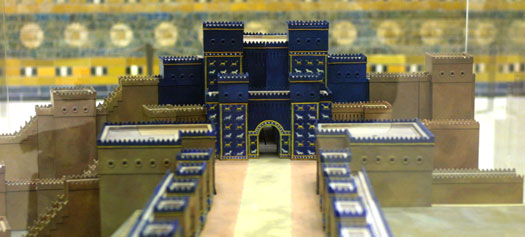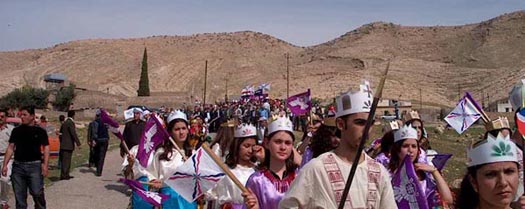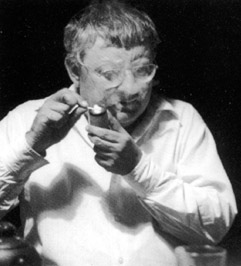A few ideas that have emerged from my readings so far.
- It would be interesting to compare what kinds of different questions does each author ask about the akitu festival, what aspects of this major social practice are they involved with. And of course digging our own discussions on body, performance and space, what sort of new research questions can be asked about it? We don't need to have answers but I am hoping that all the theory we have gone through might provoke some new questions.
- Considering Guy Debord's discussion of the "specialization of power" (Section 23), is it possible to think of the complexification of the akitu festival during the Assyro-Babylonian Iron Age as a "specialization of power"? As Jeremy Black argues, it is probably relatively more accurate to read the akitu festival of the Middle-Late Iron Age as an amalgamation of a constellation of ritual practices and urban/rural festivals in Mesopotamia over centuries into a complex and institutionalized 12-day event that involves the performances of the king, performances of various deities of Babylon and of other cities, their travel across landscape, sacrifices, feasting, kingship ceremonies, spectacles of ritual procession, the idea of divine assembly, humiliation of the king, dislocation of the city's main deity from the heart of the city to leave the city in temporary state of crisis, and so on. The fact that all of these comes together in a new hybrid form institutionalized in the Iron Age hardly seems to me a historical coincidence. Thoughts?
- I am very interested in the spatial configuration of the whole event, the weaving together of the city's urban places and extra-mural sanctuaries, other urban sanctuaries of the region etc through the 12 day event. Similarly the use of particular things, objects, artifacts that appear in various parts of the event and mediate particular socio-symbolic relationships, mytho-poetic significations, such as the two anthropomorphic statues produced by the carpenter and the smith.
- In all of this, how does theory and data inform each other, the question that C Bell poses. How does Bell deal with this herself, how do we manage it in doing our own research?

Ishtar Gate, Babylon: reconstruction model.

A contemporary akitu
Disclaimer about reading Society of the Spectacle by Guy Debord for the purposes of discussing the Assyro-Babylonian Akitu Festival
Some of you might be wondering why on earth we are reading a chapter from Guy Debord's Society of the Spectacle for a discussion of the akitu festival. What is the occasion? For those of you who are not familiar with him, he is a member of artistic and political movement of Situationist Internationale of late 1950s to 70s, who "worked aggressively to subvert the conservative ideology of the Western world", capitalism, modernity. Wikipedia describes this movement as "a very small group of international political and artistic agitators with roots in Marxism, anarchism and the early 20th century European artistic avant-garde". With their artistic, urbanistic and cultural theories, the group had a substantial impact on the revolutionary events of 1968. (Ironically the group named their utopic ideal city "New Babylon" which is sort of an urban manifesto that attacks contemporary cities). Henri Lefebvre was influenced by them quite a bit.
In the Society of the Spectacle (which is one of the most significant texts that the group has ever produced), Guy Debord is really concerned with attacking modernity, capitalism and everyday life in the late 20th c. and not so much with creating a grand social theory for past societies (I don't think we should use it as such). It is a critique of modern society. But precisely for this, it is I think very useful to read him and understand his theory of the spectacle, to grasp our own interpretations of spectacular events in antiquity. Those contemporary interpretations immersed in their Western capitalist mentality often tend to read a similar scenario in the ancient past where the society, the participating bodies are seen through a filter of passive spectatorship and not as embodied agents that in fact constitute the concrete reality of those spectacles (e.g. the scholarship in theorizing rituals and festivals for instance- see Bell's chapter). The so-called Homo Spectator. This I hope we can critique a bit.
Debord writes at the end of his Preface to the 3rd edition of the book: "This book should be read bearing in mind that it was written with the deliberate intention of doing harm to spectacular society. There was never anyhing outrageous, however, about what it had to say."
I hope you can read his chapter bearing all of this in mind. I am particularly interested in the spectrum he creates between the representation in the public realm vs. the ontologically grounded social reality on the other. Politics and ideology plays a big role in the placement of the social event in that spectrum. My question is how do we understand the role of politics in such a spectacular event in the Assyro-Babylonian public sphere, where the spectator is not necessarily imprisoned to that kind of passive role (say compared to a TV-audience).
I hope you will enjoy reading him.

Guy Debord
